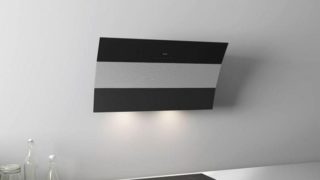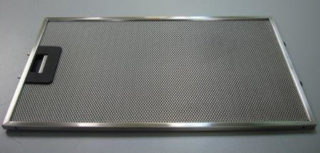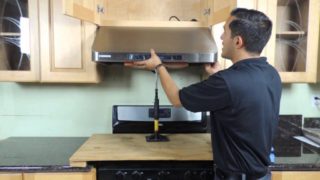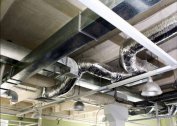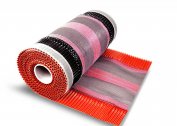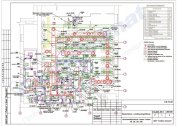A cooker hood is a necessary element in maintaining a comfortable microclimate in a room by eliminating extraneous odors. The efficiency of its work increases if the function of absorption of contaminated air is combined with its removal beyond the boundaries of the room. If this is not possible, an extractor hood for the kitchen will be required without venting into the ventilation, in which the air masses are passed through the filter system and then returned.
The principle of operation of the hood without venting to ventilation
Hoods for the kitchen work without a tap to the outside according to the extremely simple scheme. When they are included in the electrical network, the air from the room is sucked into the dome, and then passed through a system of cleaning filters. At the final stage of processing, it returns to the room in a purified form.
Some samples provide several stages of filtration, which significantly improves the quality of cleaning of polluted air masses. In these devices, before entering the coal elements, air passes through a stage of coarse filtration. Large particles of fat and trace elements causing unpleasant odors are removed.
Hood classification
According to the principle of operation, kitchen units are divided into flowing and convection models. The devices of the first type purify the contaminated air in the grease trap, and then discharge it into the duct. It is thrown out through the ventilation duct, and instead fresh portions enter the kitchen room. A sample of hoods of this type is the Davoline 60 model from the Russian manufacturer ELIKOR.
Recirculation devices do not have a direct outlet to the duct. They are equipped with a built-in fan that drives air through the filter elements. Its first step is a grease trap that traps particles of dust, grease, soot and fumes. This is followed by a fine filter that saves air from odors and tiny particles that are not retained in the first stage. The circulation hood is dispensed with fresh air from the street. For its functioning, it is enough to connect to the home electrical network, after which the fan comes into effect. This type of device is presented on the market by 60-centimeter DWK 065G60R models from the famous German manufacturer Bosch.
According to the shape of the housing and type of filters
In accordance with the design, kitchen hoods without vents to the ventilation are divided into horizontal or flat, installed parallel to the gas stove. In addition, vertical models for sale in large kitchens are available. A typical representative of flat products is a sample from the Japanese manufacturer Shindo ITEA 60 B. By the type of built-in filtering device, the hood without a duct can be disposable or reusable. The former are used only once until the filter is completely filled; in the latter, after contamination, the filter is replaced with a new one.
By installation method
On this basis, hoods are divided into the following types:
- Hanging devices mounted on the wall in the selected location. Sometimes they are equipped with retractable panels, expanding the area of capture of polluted air.
- Built-in products located inside wall cabinets and hidden from the eyes of visitors.
- Island devices mounted to the ceiling.
The latter variety is used when the plate is installed away from the walls.Hanging samples include products from the manufacturer from England, MAUNFELD MPA. Built-in and island units are presented on the market by Integra 45P-400-V2L KV II M-400-45-280 Beige models from the Russian manufacturer Elikor.
Advantages and disadvantages
The advantages of hoods without duct include:
- ease of installation - due to the lack of air duct and the need to connect to ventilation, it is easily integrated into the kitchen cabinet;
- low noise level;
- the opportunity to fit into the design of any kitchen;
- profitability - consume less electricity from the network.
The main disadvantage of the devices is the need for constant replacement of filter elements and the associated costs.
Technical Overview
The main characteristics of hoods without air ducts include:
- exhaust unit dimensions;
- device power and its performance;
- number and type of filtering elements;
- case material;
- the presence of lighting and the type of light bulbs.
The appearance, as well as the size and shape of the hoods are taken into account so that they harmoniously fit into the interiors of modern kitchens. Unit performance is selected taking into account the volume of serviced space. To determine this indicator, the kitchen area is multiplied with its height, the result is multiplied by 9 - you get a number corresponding to the required performance of the device. When choosing it, a model with a wide adjustment range is preferable, which allows you to control the performance of the unit depending on the situation.
Estimation of hood parameters
When evaluating the characteristics of exhaust units, the following points are taken into account:
- sizes are indicated in the documentation for the sample sold;
- typical dimensions are selected from the following series: 50, 60 or 90 cm;
- the exact value should correspond to the dimensions of the gas stove or hob;
- productivity corresponds to values in the range of 300-600 cubic meters per hour, the noise level of the product depends on the correct selection of these indicators;
- the number and type of filters affects the efficiency of air purification;
- the presence in the hoods of lighting bulbs increases the comfort of using them.
Two types of filters are optimally suited for hoods without a pipe outlet: grease filter and replaceable carbon filter. How often the filter element should be changed is indicated in the technical documentation.
Basic rules for selecting hoods
When choosing and purchasing a hood without an air duct, it is important to consider the following points:
- product dimensions are selected according to the size of the stove installed in the kitchen;
- its performance should correspond to the volume of serviced space;
- for small premises, an exhaust hood with increased fan power is not required;
- when choosing a product, attention is drawn to the noise level directly related to the power indicator.
In addition, you will need to familiarize yourself with the presence and composition of the filter elements of the air purifier.
Consider an example of determining the performance of a hood connected to a network. Provided that the dimensions of the kitchen are 3x4 meters, and its height is 2.7 meters, the exhaust power above the gas stove is determined as follows. First, the kitchen volume is calculated 3 × 4 × 2.7 = 32.4 cubic meters. If we take into account that according to the requirements of sanitation, the air must be updated at least 9 times per hour, then the required capacity is 32.4 × 9 = 291.6 m3 / hour. In addition, a small margin of at least 20% is taken into account.
If the engine is used for a long time in extreme modes, then the margin of power (productivity) can be increased. In the considered example, with a 20 percent coefficient, the result is as follows: 291.6 × 1.2 = 349 m3 / hour. But a larger margin should not be chosen, becauseThis will lead to unjustified losses of electricity and reduce the efficiency of the device.
Basic installation rules and common errors
The installation of hoods with carbon filters is much simpler than the same procedure for units connected to the duct. To install them, you will need to do the following operations:
- measure a length of 75 cm from the surface of the gas stove or hob;
- then at this level mark the points under the fasteners of the unit;
- Next, you need to fix the case using the bolts supplied with the kit (for the hinged version).
If the built-in model is mounted, it is installed in the same way inside the wall cabinet. After connecting to the local power grid, it is ready for use. Errors in installing kitchen hoods without venting are the same as when connecting conventional devices.
The main ones are listed below:
- the dimensions of the device are incorrectly selected;
- wrong place to install the unit;
- its performance and power does not correspond to the volume of serviced space.
The last error leads to unjustified costs and to increased noise of the hood.

